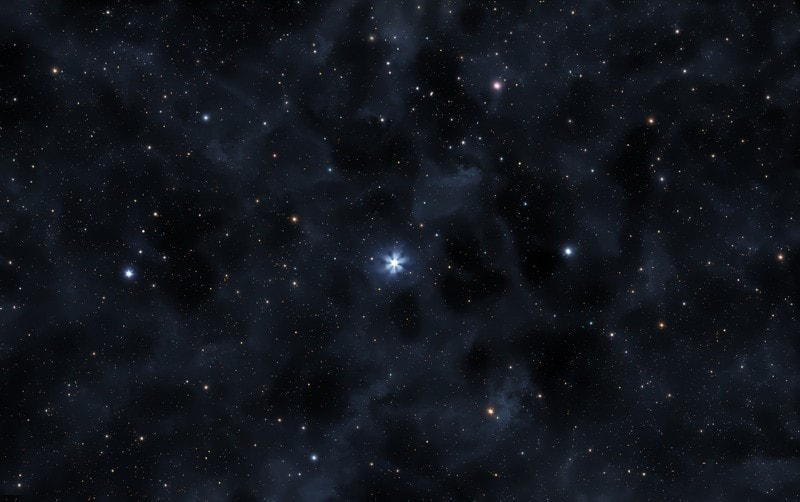What Is the North Star & How Do I Find It?
Last Updated on

When we look up, the stars change their apparent position according to the time of year and through the course of a night, but for those of us in the Northern Hemisphere, there is one star that stays pretty much constant. The North Star, or Polaris, is located almost directly above the North Pole, which means that as the Earth rotates on its axis, it remains in virtually the same spot with only a slight movement over the night.
Handily, the North Star is one of the brightest in the sky, and once you can locate it, you can always find the geographical north. It has long been used as a navigational aid and is always visible for those of us in the Northern Hemisphere as long as the sky is clear. Even in cities, where light pollution can make it difficult to spot dimmer stars, it should be visible. You can find the North Star by using the Big Dipper constellation: the two stars that form the end of the cup point to Polaris, which itself is the tail star of the Little Dipper constellation, which is almost an inverted equivalent to the Big Dipper.

What Is the North Star?
The North Star is a star or celestial point that appears almost exactly above the North Pole in the night sky. It is visible from the whole of the Northern Hemisphere and because it is above the North Pole, it means that facing the North Star means you are facing north.
Currently, the North Star is Polaris, which is actually a group of three stars that are locked in the same orbit. Because of their distance from Earth, they appear as one star to the naked eye. The brightest of the three is a yellow supergiant. Despite being 1,000 times as bright as our Sun, this supergiant is 400 light-years away so appears much smaller and fainter. It is the 50th brightest star in the sky.
How Do I Find It?
Although the North Star is visibly bright throughout the year, it isn’t the most prominent star in the sky, and spotting any single star without using others as reference is very difficult. Fortunately, finding the North Star is relatively easy thanks to a constellation that most of us know.
The Big Dipper, also called the Plough in some parts of the world, is a constellation that looks somewhat like a pan. It has a series of three stars, forming a bent handle, and four stars that form a cup shape at the end of the handle. Once you have found the Big Dipper, look at the two stars that form the end of the cup furthest away from the handle. Follow the line they form from the bottom to the top of the cup and extend this line. Polaris forms the tail of a constellation called the Little Dipper, which has a similar shape but is smaller than the Big Dipper.
What Is Vega?
Polaris is currently the North Star, but it hasn’t always been and won’t always be in the future. The term “North Star” refers to the one that is closest to being directly above the North Pole, but this does change over time. Approximately 24,000 years ago, a star called Vega was the North Star, and this same star will be the North Star again in approximately 12,000 years.

Final Thoughts
The North Star, which is currently Polaris, is located above the North Pole and can be used as a navigation aid to find which way is geographic north. The star can be located by following two stars in the Big Dipper constellation and is the tail star of the Little Dipper constellation.
Featured Image Credit: Yuriy Mazur, Shutterstock
Table of Contents
About the Author Robert Sparks
Robert’s obsession with all things optical started early in life, when his optician father would bring home prototypes for Robert to play with. Nowadays, Robert is dedicated to helping others find the right optics for their needs. His hobbies include astronomy, astrophysics, and model building. Originally from Newark, NJ, he resides in Santa Fe, New Mexico, where the nighttime skies are filled with glittering stars.
Related Articles:
How to Collimate Binoculars: 9 Expert Tips
Binocular Magnification Chart: Numbers & Distances Compared
How to Clean a Refractor Telescope: Step-by-Step Guide
How to Clean a Telescope Eyepiece: Step-by-Step Guide
What Is the Best Binocular Magnification for Hunting? Optical Features Explained
How to Clean a Rifle Scope: 8 Expert Tips
When Were Binoculars Invented? History, Today & Future
Can You Use Binoculars to Look At Stars? How to Choose the Right Pair
